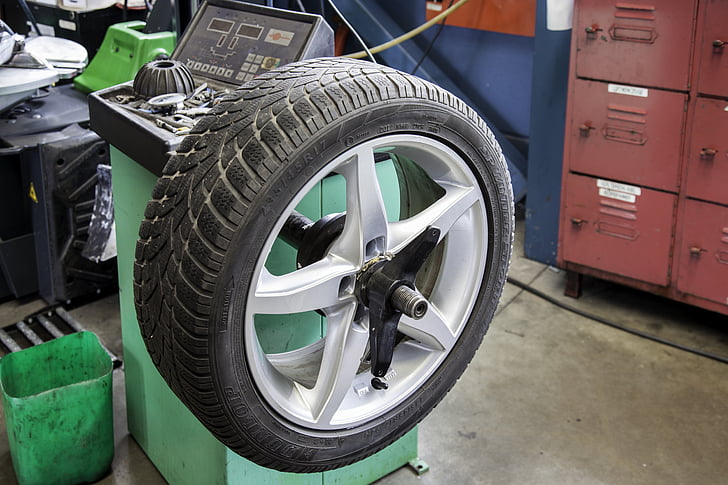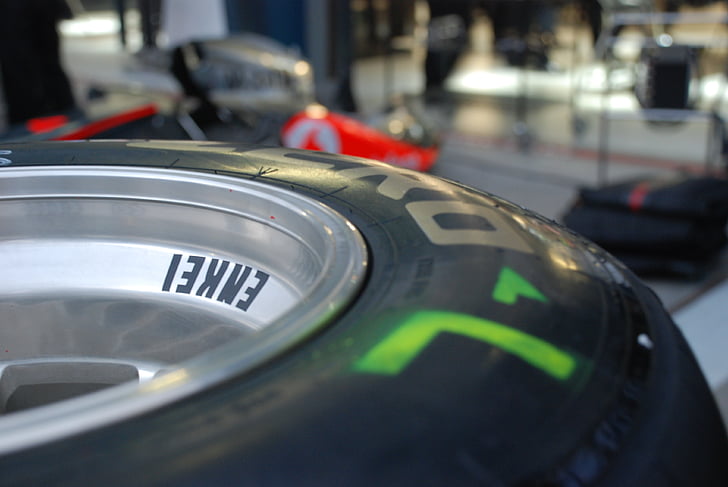Key Applications of Permanent Magnet Synchronous Motors in the Tire Industry
With the ever-growing call from the global aspect of environmental protection and sustainable development, the rubber industry and subsequently that of tire manufacturers is ever being pressurized towards energy consumption reduction and emission cut in carbon dioxide. Traditional equipment in tire production normally adopts DC motors or VF asynchronous motors, which can meet the requirement of production to some extent but has certain limitations concerning energy efficiency and performance. Permanent magnet synchronous motors, with their high efficiency, energy saving, and reliability, have become an ideal choice in the modern tire industry.

PMSM applies in many key production processes and other aspects of the industry. Because of its advantages, the Permanent Magnet Synchronous Motor is gaining favor day by day. With this background, permanent magnet synchronous motors, as a kind of advanced motor technology, have become one of the key applications in the tire industry. The key application in the tire industry provides strong support for factories to achieve efficient, energy-saving, and sustainable production. With the continuous development of technology, permanent magnet synchronous motors will have an even broader application prospect in the future, helping the tire industry move towards a greener and more sustainable future.
Application of permanent magnet synchronous motor in tire industry
Permanent magnet synchronous motor is a kind of AC motor using permanent magnet as excitation source, which has the advantages of high efficiency, high power density and high dynamic response. In the tire industry, permanent magnet synchronous motors of various power ranges and different configurations have been developed to meet the demand for high efficiency and high precision control. These motors are typically made of rare earth permanent magnet materials with high magnetic energy product and permeability to provide strong magnetic force. In addition, structure optimization and control algorithms have been studied for permanent magnet synchronous motors to achieve higher performance and reliability for the special requirements of the tire production process.
Permanent magnet synchronous motors are widely used in the tire industry for different power requirements. According to the specific production requirements, permanent magnet synchronous motors with appropriate power range and center height can be selected. For example, for large tire molding and vulcanizing machines, which usually require higher power and torque output, a higher power permanent magnet synchronous motor is selected; while for small rubber mixing machines, a lower power permanent magnet synchronous motor can be selected.
In the tire industry, permanent magnet synchronous motors need to run for a long time and generate a lot of heat. In order to ensure the normal operation and prolong the service life of the motor, different cooling methods are applied to permanent magnet synchronous motors in the tire industry.
Air cooling: Air-cooling is a common cooling method, which is widely used in the tire industry. By installing fans and heat sinks, air is blown across the surface of the motor to reduce the motor temperature. Air-cooling is simple, low-cost, and has good adaptability to the environment, and is suitable for some low-power permanent magnet synchronous motors.
Water cooling: Water cooling is a more efficient way of cooling, through the water cooling system to circulate the cooling water flow through the motor to absorb heat. Compared with air cooling, water cooling has better heat dissipation effect and stability. Especially in high-power permanent magnet synchronous motors, water cooling can better maintain the temperature stability of the motor and improve the reliability and life of the motor.
Air-water cooling: Air-water cooling is a cooling method that combines air cooling and water cooling. It achieves cooling by atomizing the cooling water through nozzles to form tiny water droplets and using the airflow generated by the motor rotation to carry the water droplets away. This method can reduce the complexity of the water cooling system and improve the cooling effect, which is suitable for some medium power permanent magnet synchronous motors.

Energy-saving effect of permanent magnet synchronous motor
In the tire industry, the application of permanent magnet synchronous motor can not only achieve significant energy saving effect, but also further improve the energy saving efficiency through frequency conversion speed regulation and load matching and other measures. The application of these technologies not only reduces energy consumption and carbon emissions, but also helps to improve production efficiency and product quality, in line with the goal of sustainable development.
Frequency conversion speed regulation: technical permanent magnet synchronous motor can be precisely adjusted according to the actual work demand. Traditional asynchronous motors usually run at a fixed speed, but the workload in the tire production process usually changes. The permanent magnet synchronous motor combined with frequency converter can realize stepless speed regulation, so that the motor can flexibly adjust the speed and output power according to the actual needs. In this way, not only can reduce unnecessary energy loss, but also avoid the waste of energy consumption due to load changes, thus further improving the energy saving effect.
Load matching: Permanent magnet synchronous motors have a wide torque speed range and excellent dynamic response capability, which can better adapt to different load requirements. By accurately matching the load of the motor, energy waste and loss can be minimized.
Stable magnetic field: Permanent magnet synchronous motors (PM synchronous motors) have their own stable magnetic field and do not require an external excitation source, which further reduces energy consumption. Compared with traditional asynchronous motors, permanent magnet synchronous motors are more efficient in magnetic field generation and torque output, which can better adapt to the production requirements of the tire industry.
Simple structure: Compared with the traditional belt drive structure, the structure of permanent magnet direct drive motor is more simple, reducing the energy loss caused by the transmission chain. In addition, since permanent magnet direct-drive motors do not require the use of mechanical transmission devices (such as gearboxes, etc.) in traditional motors, they can avoid wear and tear of transmission parts and energy loss, which further improves energy saving. At the same time, due to the reduction of transmission parts, permanent magnet direct-drive motors are also more convenient in terms of maintenance, reducing the maintenance costs and downtime of the equipment.
As a key technology in the modern tire industry, permanent magnet synchronous motor has achieved remarkable results when it is applied in the tire industry. The application of permanent magnet synchronous motors in the tire industry is of great significance and broad prospects. Its compelling features and advantages can not only realize energy saving, improve production efficiency and product quality, but also create more economic and environmental benefits for enterprises.